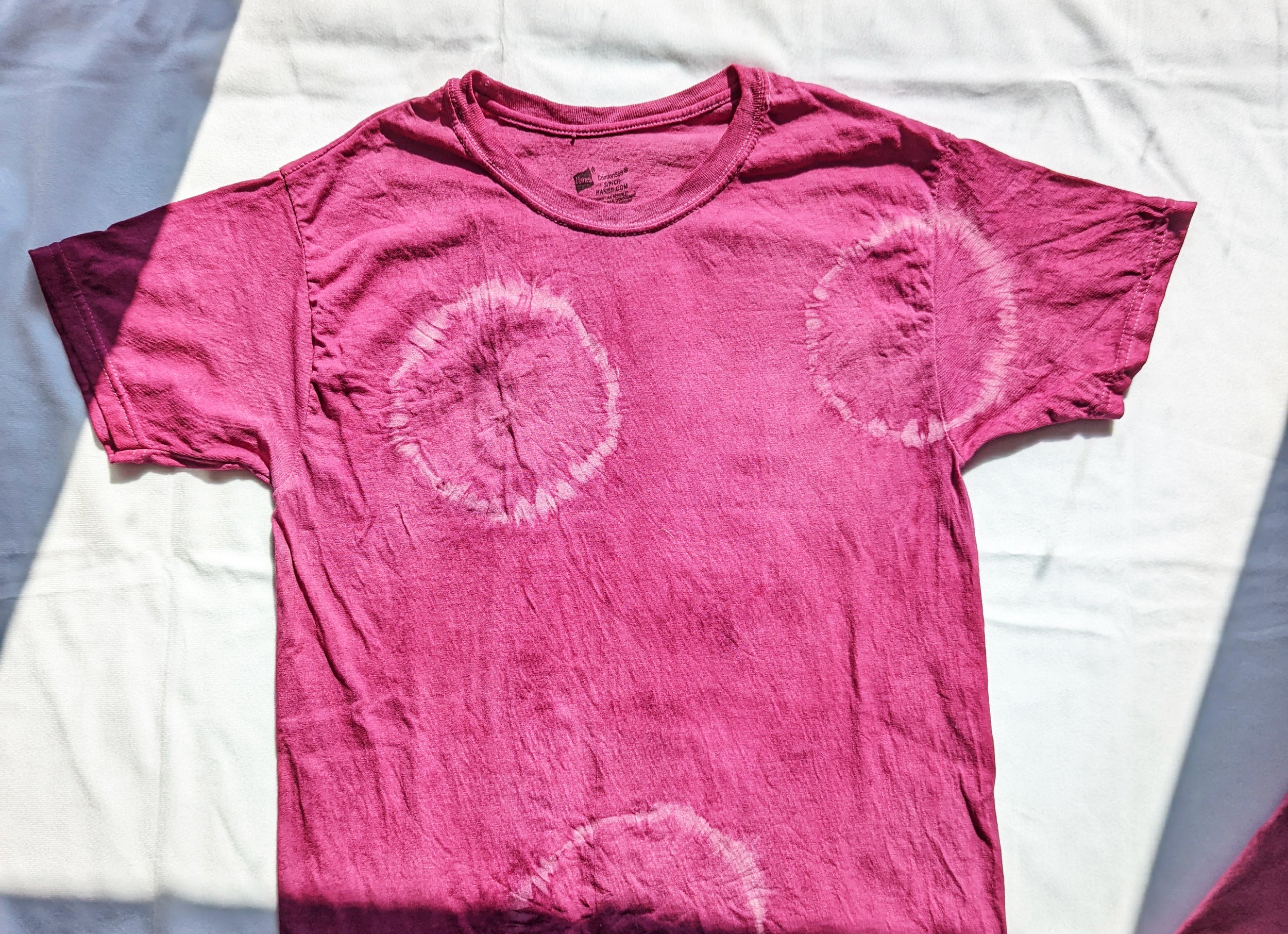Dyeing Cotton With Cochineal
These last few weeks we’ve been doing a lot of dyeing on cotton, and one of the things we’ve been working on is our recipe for dyeing cotton with cochineal. In the past we’ve gotten good results but not great results, so we’ve been looking through old dyeing manuals from the late 1800s and early 1900s for tips.
Cochineal has well-deserved reputation for being one of the most difficult natural dyes to apply to plant fibers. The main dyestuff, carminic acid, has basically zero affinity for cotton, so you have to rely entirely on your mordanting process to get it to stick. After much experimentation (and lots of swatches that faded to a pale pink after they dried), we discovered that the problem was that we weren’t letting our cotton dry out completely between tanning and mordanting, and between mordanting and dyeing. Nothing really attaches easily to cotton—not tannins, not mordants, and not dyes. However, cotton does soak up liquid really well, and you can exploit this to mechanically bond tannins and mordants to cotton, at least temporarily. For example, after cotton soaks for 6 hours in a concentrated sumac bath, it will be chock-full of tannins. However, if you rinse the cotton at this point, you will quickly rinse the tannins right back out. Likewise, if you put it in a mordant bath right after it comes out of the tannin bath, a lot of the tannins will just wash out of the fiber before they have time to bond to the mordant and create a tannate complex on the cotton. The solution is to dry the soaked cotton completely between each step. That way, when you put it in the next bath, the tannins or mordants will not wash out and they will form complexes in the cotton fiber itself. Drying twice adds a lot of time to the preparation process, but the improvement is dramatic.
We’ve found that the best results for dyeing cotton come from the following process:
Soak the scoured cotton in a 10% solution of Sumac Extract for 3-6 hours, or overnight. When removing, gently squeeze but do not rinse. Leave as much of the liquid in as possible.
Let the cotton dry completely, whether on a clothesline in direct sunlight or in front of a heat source.
Make a mordant bath of 20% alum, to which is added 5% soda ash dissolved in a cup of cool water. Heat the mordant bath to 130F, insert the cotton, and work it in the bath for 3 minutes (for tshirt cotton) to 5 minutes (for broadcloth). Remove, gently squeeze out excess, and let dry completely.
Make a dyebath using 12% cochineal, acidified to PH5 with cream of tartar. Heat to 170F, insert the dry cotton (which should now have a sort of yellowish cast from all the tannin and alum in it), then quickly bring to a boil and boil for 1 hour. Remove from heat and let cool.
Remove cotton wearing rubber gloves, wring out well, and hang up to dry.
After 24 hours of drying, rinse well in a fixing bath with a teaspoon or two of Synthrapol at 180F.
Once we have a little more time we plan to create a full page for “Dyeing Cotton With Cochineal” with more pictures, more details instructions, and some more explanations of which each step is important. Hopefully this will help other natural dyers avoid the curse of pale pink.
Update: The detailed instructions and illustrations are posted on our page Dyeing Cotton With Cochineal.


